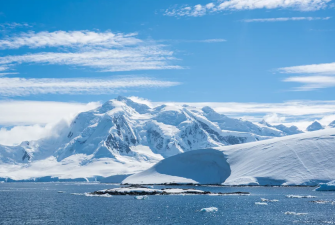The North and South Poles appear symmetrical, one at Earth's northernmost and the other at its southernmost, but the temperature difference is astonishingly large.
The average winter temperature near the North Pole ranges from -30°C to -40°C, while the South Pole can reach a low of -89.2°C, nearly the lowest known natural temperature. Why do these two polar regions, equally shielded from sunlight, experience such stark differences in temperature?
Antarctica:
Located at Earth's South Pole, Antarctica is the world's largest continent, covering approximately 14 million square kilometers. Covered in snow, it experiences an extremely cold climate, with an average temperature of -60°C and a low of -89.2°C. This land is home to numerous polar species, including penguins, seals, and whales.
Why is Antarctica so cold?
- Geographical Factors: Antarctica is located at Earth's South Pole, aligning with Earth's axis of rotation. Consequently, the Antarctic region receives less solar radiation, resulting in lower temperatures. Furthermore, Antarctica is surrounded by a vast ocean, whose temperature-regulating effect contributes to the colder Antarctic region.
- Atmospheric Circulation Factors
The Antarctic region's atmospheric circulation is characterized by high-pressure zones, which cause air to sink, leading to lower temperatures. Furthermore, the ocean circulation surrounding the Antarctic continent also contributes to the region's coldness.
- Ice and Snow Factors
Approximately 98% of Antarctica is covered in ice and snow, which reflects solar radiation, further lowering the surface temperature. Furthermore, melting ice and snow absorb a significant amount of heat, further chilling Antarctic temperatures.
Antarctica is not the coldest place on Earth
Although Antarctica boasts extremely low temperatures, it is not actually the coldest place on Earth. According to scientists, the coldest place on Earth is located on the eastern plateau in the interior of Antarctica. Temperatures there are extremely low, reaching -89.2°C, making it the coldest known place on Earth.
In addition, there are other cold regions on Earth, such as Siberia in Russia and the Canadian Arctic. Temperatures in these areas are also quite low, but still far below those in the eastern plateaus of the Antarctic continent.
Antarctic Climate Change and Its Impacts
In recent years, global warming has accelerated the melting of Antarctic ice and snow. This not only impacts the Antarctic ecosystem but also potentially contributes to rising global sea levels, threatening the survival of coastal cities.
- Ecological Impacts
Melting Antarctic ice and snow is shrinking habitats, posing a threat to polar life. Furthermore, melting ice and snow can lead to soil salinization, impacting plant growth.
- Sea Level Rise
Melting Antarctic ice and snow is contributing to global sea level rise. Scientists predict that if all Antarctic ice and snow melt, global sea levels will rise by approximately 60 meters, bringing devastating disasters to coastal cities.






